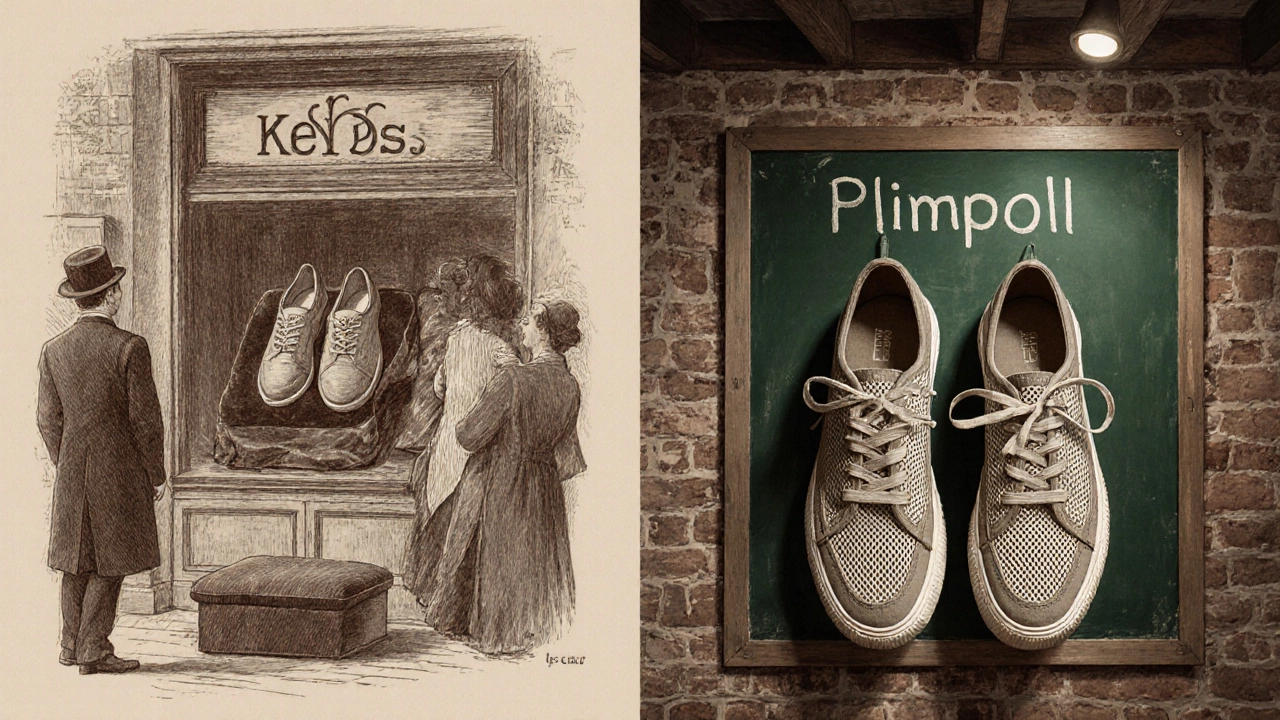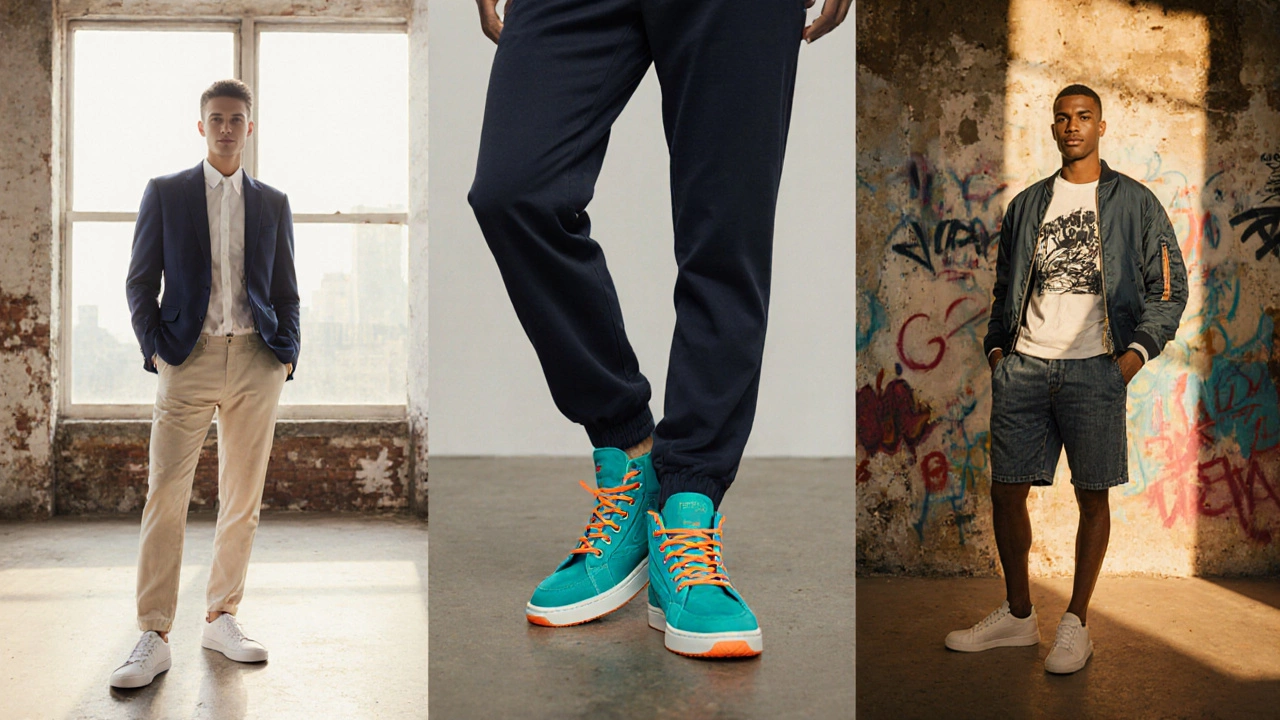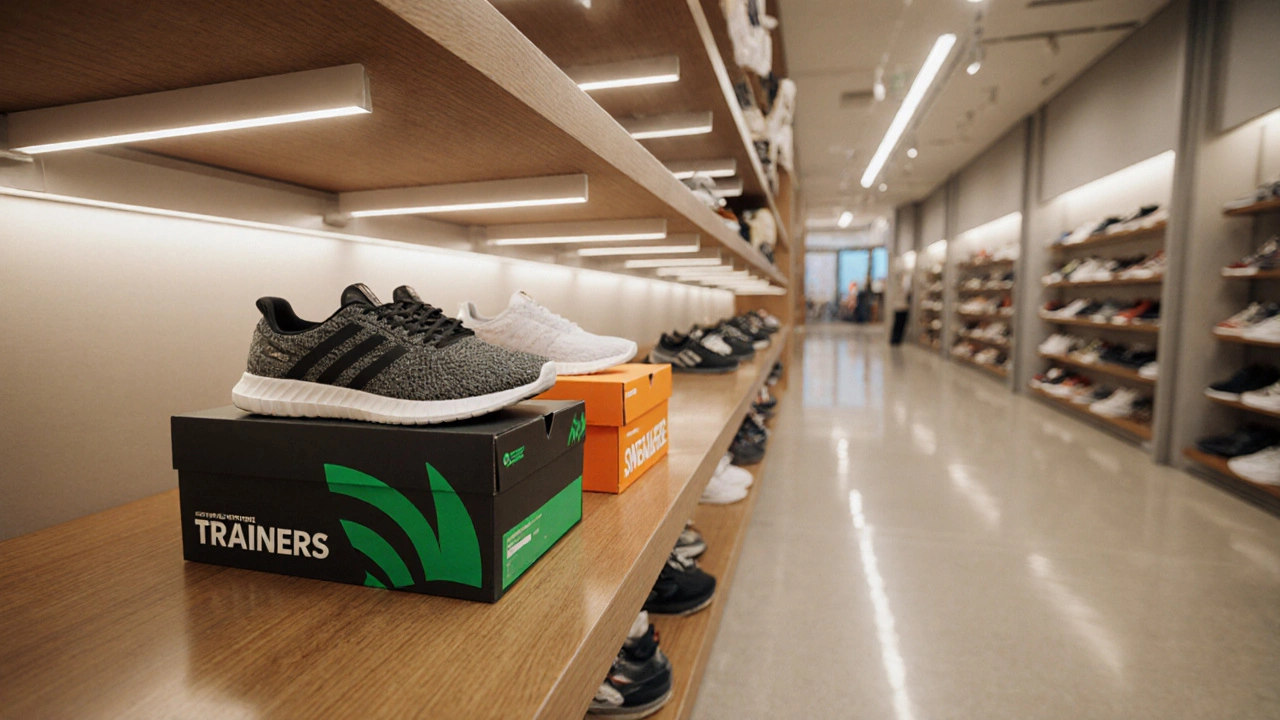Trainers vs Sneakers Classifier
Shoe Type Classifier
Select the shoe attributes to determine whether it's more likely a trainer or sneaker.
Ever stood in a shoe aisle wondering whether you should grab the trainers vs sneakers label on the box? It’s not just a marketing gimmick - the two terms point to distinct design histories, uses, and cultural meanings. Below we break down what each word really means, where it comes from, and how you can pick the right pair for your activity or outfit.
Defining Trainers and Sneakers
First things first, let’s put clear definitions on the table.
Trainers are a type of athletic shoe originally designed for sport-specific training and later adopted for casual wear. In the UK and many Commonwealth countries, the word “trainers” is the default term for what the US calls “sneakers”.
Sneakers are casual shoes with a rubber sole and canvas or leather upper, originally marketed as quiet, “sneaky” footwear for indoor use. In the United States, “sneakers” is the umbrella term for most non‑formal footwear with a soft sole.
Both share a soft, flexible sole, but the nuances lie in heritage, primary purpose, and regional branding.
Historical Roots
The story begins in the late 19th century. In 1892, the U.S. company Keds introduced the first mass‑produced canvas shoe with a rubber sole and named them “sneakers” because the soft sole let wearers “sneak” around quietly. Meanwhile, across the Atlantic, the British brand Dunlop released a shoe in 1916 called the “plimsoll”, which later morphed into the modern “trainer” as it became popular for physical‑education classes.
During the 1950s and ’60s, the rise of basketball and running kicked the performance side of trainers into high gear. Brands like Adidas and Puma marketed shoes specifically for training drills, calling them “training shoes”. At the same time, catch‑all casual footwear kept the “sneakers” label.
By the 1990s, street culture blurred the lines. Hip‑hop artists in New York popularised high‑top basketball sneakers as fashion statements, while British runners still referred to their performance shoes as “trainers”. The split remained, but the overlap grew.

Design and Construction
Even though modern production methods have largely converged, some design cues still hint at each term’s origins.
- Upper material: Classic sneakers often feature canvas or smooth leather; trainers may incorporate mesh, suede, or engineered knit for breathability.
- Sole technology: Trainers frequently include sport‑specific cushioning (e.g., EVA foam for running, TPU plates for stability). Sneakers may have flatter, uniform midsoles aimed at style.
- Outsole pattern: Trainers often sport deeper tread patterns to grip gym floors or tracks, while sneakers may have a minimalist rubber outsole for everyday traction.
- Heel height: Performance trainers can have a higher heel drop (10-12mm) to aid forward motion, whereas fashion sneakers tend toward a low‑profile heel for a sleek silhouette.
These differences are not hard rules - many contemporary shoes are marketed as “training sneakers” or “lifestyle trainers”. Still, knowing the typical construction helps when you read product specs.
Typical Use Cases
Understanding usage is the easiest way to decide which term fits your needs.
- Gym workouts, cross‑training, or sport‑specific drills: Look for the word “trainer” on the label. Expect supportive arches, breathable uppers, and a sole designed for lateral movement.
- Running or jogging: Many brands still list these as “running trainers” or “running shoes”. The emphasis is on cushioning and shock absorption.
- Casual everyday wear: “Sneakers” dominate this category. They’re built for comfort on pavement but don’t necessarily excel at high‑intensity activities.
- Fashion‑focused outfits: Designers release limited‑edition “sneakers” that prioritize colorways, retro silhouettes, and brand collaborations over performance metrics.
When a shoe is marketed as a “training shoe” you can safely assume it’s engineered for activity. If it’s called a “sneaker”, expect a style‑first approach.
Regional Naming Conventions
Language often trips people up when they travel or shop online.
United Kingdom uses the term “trainers” for most athletic‑style shoes and “sneakers” mainly for retro or fashion‑oriented models.
United States applies “sneakers” to virtually any casual shoe with a rubber sole, while “trainers” is occasionally used in a gym‑specific context (e.g., “training shoes”).
In Australia and New Zealand, both terms appear, but “trainers” is more common in sports stores, whereas “sneakers” dominate street‑wear boutiques.
When shopping internationally, check the product description rather than relying on the name alone.

Styling Tips: When to Wear Each
Even if a pair is technically a trainer, you can dress it up or down. Here are practical ideas.
- Gym‑to‑office hack: Pair low‑profile white trainers with slim chinos and a crisp shirt for a business‑casual look that still lets you sprint to the subway.
- Street‑style statement: Choose bold, high‑top sneakers in vibrant colors and match them with tapered joggers and a graphic tee.
- Weekend casual: Classic canvas sneakers work well with denim shorts, a polo, and a lightweight bomber jacket.
- Running outfit: Match your running trainers with moisture‑wicking shorts, a compression top, and a breathable cap.
Key is to align the shoe’s purpose with the outfit’s vibe. If the shoe emphasises performance, keep the rest of the look functional. If it’s fashion‑forward, feel free to experiment with colors and textures.
Quick Comparison Table
| Attribute | Trainers | Sneakers |
|---|---|---|
| Primary Origin | UK / Commonwealth sportswear | US casual footwear |
| Design Focus | Performance, support, grip | Style, versatility |
| Typical Upper | Mesh, engineered knit, suede | Canvas, smooth leather, premium knit |
| Sole Technology | Cushioning plates, sport‑specific tread | Flat rubber, retro outsole patterns |
| Common Uses | Gym, running, sport drills | Everyday wear, fashion collaborations |
| Price Range (2025) | $80-$180 | $60-$250 |
| Regional Preference | UK, Australia, NZ | US, Canada |
Use this table as a quick checklist when you’re scrolling through product pages. If the shoe checks the “performance” boxes, you’re likely looking at a trainer, even if the title says “sneaker”.
Frequently Asked Questions
Are trainers and sneakers the same thing?
Not exactly. While both have rubber soles and are non‑formal, “trainers” usually refer to shoes built for athletic training, whereas “sneakers” are a broader category that includes fashion‑focused, casual styles.
Which term should I use when shopping online?
Check the product description. If you need performance features, look for words like “training”, “run”, or “sport”. If you’re after style, “sneaker”, “retro”, or “fashion” are good signals. Regionally, UK sites will list most performance shoes as “trainers”.
Can I wear trainers with a suit?
Yes, but choose a low‑profile, leather trainer in a neutral color (black, navy, or dark brown). Pair with slim‑fit trousers and a tailored jacket for a smart‑casual look.
Do sneakers provide any performance benefits?
Some modern “sneakers” blend performance tech with style, especially collaborations that feature responsive midsoles. However, pure fashion sneakers lack the specific cushioning or tread patterns found in dedicated trainers.
What’s the price difference between trainers and sneakers?
In 2025, trainers typically range from $80 to $180 for mid‑tier models, while sneakers can start as low as $60 and go up to $250 for limited‑edition releases. Premium performance trainers can exceed $250, especially for specialized running or trail models.
